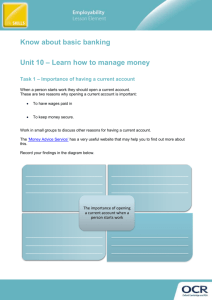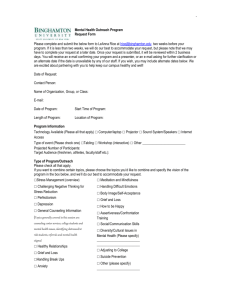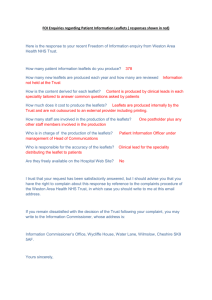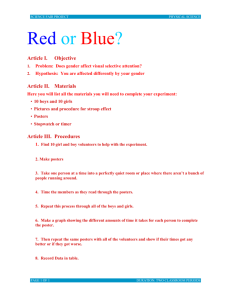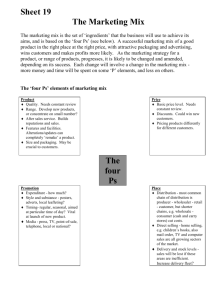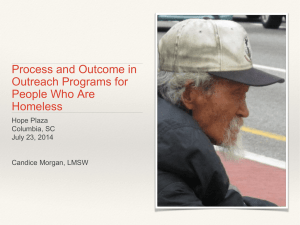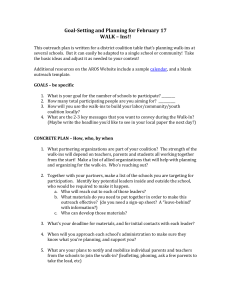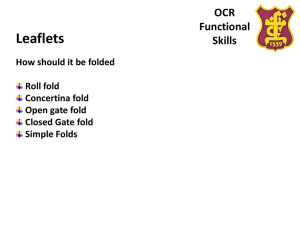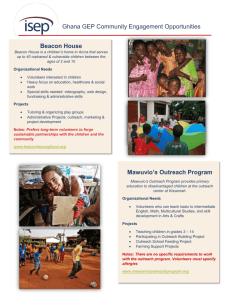When it comes to posters, handmade and flex-print
advertisement
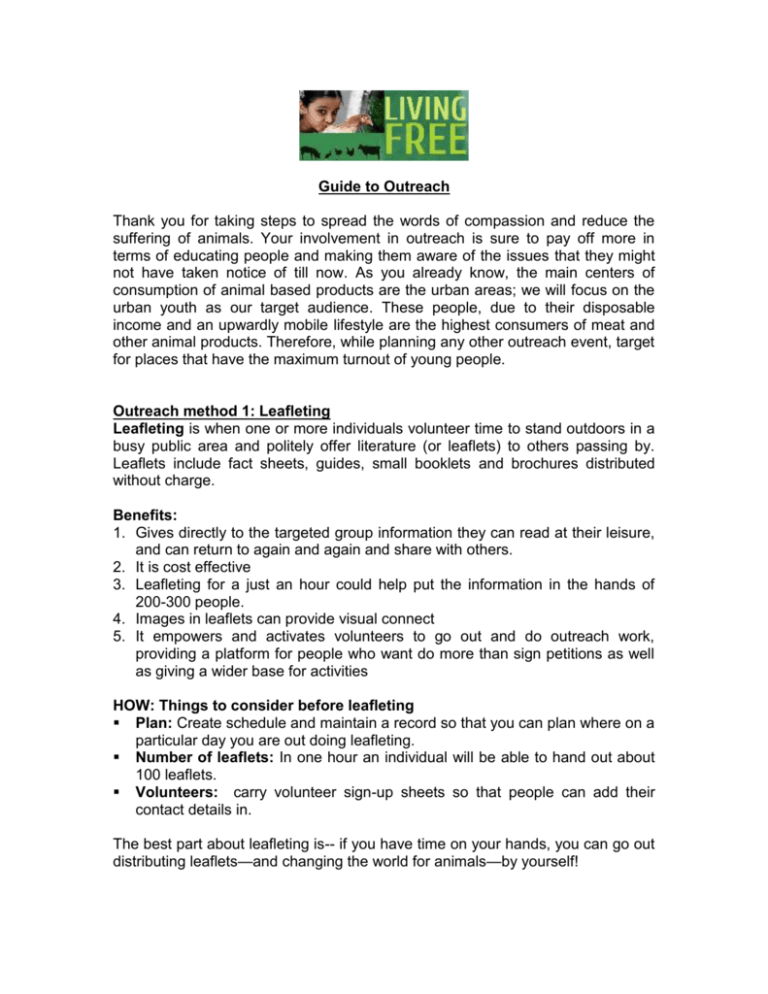
Guide to Outreach Thank you for taking steps to spread the words of compassion and reduce the suffering of animals. Your involvement in outreach is sure to pay off more in terms of educating people and making them aware of the issues that they might not have taken notice of till now. As you already know, the main centers of consumption of animal based products are the urban areas; we will focus on the urban youth as our target audience. These people, due to their disposable income and an upwardly mobile lifestyle are the highest consumers of meat and other animal products. Therefore, while planning any other outreach event, target for places that have the maximum turnout of young people. Outreach method 1: Leafleting Leafleting is when one or more individuals volunteer time to stand outdoors in a busy public area and politely offer literature (or leaflets) to others passing by. Leaflets include fact sheets, guides, small booklets and brochures distributed without charge. Benefits: 1. Gives directly to the targeted group information they can read at their leisure, and can return to again and again and share with others. 2. It is cost effective 3. Leafleting for a just an hour could help put the information in the hands of 200-300 people. 4. Images in leaflets can provide visual connect 5. It empowers and activates volunteers to go out and do outreach work, providing a platform for people who want do more than sign petitions as well as giving a wider base for activities HOW: Things to consider before leafleting Plan: Create schedule and maintain a record so that you can plan where on a particular day you are out doing leafleting. Number of leaflets: In one hour an individual will be able to hand out about 100 leaflets. Volunteers: carry volunteer sign-up sheets so that people can add their contact details in. The best part about leafleting is-- if you have time on your hands, you can go out distributing leaflets—and changing the world for animals—by yourself! When approaching people, it’s best to ask something like ‘May I share with you a leaflet on animal welfare’ with a warm smile. Try to establish contact as much as possible before handing the leaflet. However, if you do not feel comfortable to speak, you can carry on leafleting silently or with just a smile and/or a nod. If some people refuse to take the leaflets, don’t take it personally. This might be infectious and a few others (following them) might also brush off. In that case, stop a while and create another wave. It’s better to move to another spot or stop leafleting till a few people pass and then restart. In some cases, police who were driving around have approached with curiosity and seemed quite happy with a vegetarian awareness drive. Since it is not a political cause, most police do not disturb or question. If they do approach, be friendly and explain that you are doing this activity to save animals, that it’s an effort to protect animals. Give them a leaflet. If the police want you to leave, do not go into a confrontation. If you want, you can take down the name of the police personnel and later lodge a complaint against him, but it’s preferable to be in peace. Smiles can win more than arguments. Checklist of material needed at the leafleting site – a) Leaflets in appropriate language b) Volunteer sign-up sheet c) Stationary (Staplers, pens, cello tape, scissors, drawing pins, stapler, rulers, exam boards, fact sheets) d) Camera e) Water f) A feedback register g) List of vegan options for dairy products and other fact sheets WHERE and WHEN: Choosing a location and time for leafleting Leafleting in public spots is not illegal in India, but when leafleting in a private area such as a college, office campus, exhibition, expo or speaking event, it is best to get necessary permissions. a) For leafleting in colleges, 9 am to 2:30 pm is when there is most traffic. If you only have one or two hours to spare, leaflet around lunchtime. Class changes generate the most traffic flow. b) Typically for office areas, the lunch break time works best. Avoid morning and evening hours. c) For shopping areas, parks and malls evening hours is when you get the most pedestrian traffic. d) Rush hour situations at stations etc. might seem prospective, but remember, people will be in too much of hurry to be open to accepting literature. The ‘getting home’ crowd is better than the ‘going to work’ crowd in terms of acceptability. Colleges: It is easy to get students to support good causes. Visiting the same college more than once makes you a familiar face. Get in touch with the active social group of the college to participate or encourage them to host animal-friendly events. Make it fun by dressing a volunteer up in an animal costume and making him/her walking around! Approach the college office first, you could call or visit them directly. Some colleges can have restrictions on where you stand number of hours, etc. It is also unlikely that permissions will be granted during exams. However, leafleting outside the gates of a college or institution doesn’t require any permission and can be great places with a huge number of young people moving in and out. Malls: Always take permissions to leaflet in a privately-owned space. However, if the mall authorities deny permission, you can carry on leafleting on the road outside the mall. Outreach method 2: Tabling Events/Stalls Tabling means setting up a table on which is displayed a variety of informational brochures, graphic images, or a laptop with video rolling. A friendly, wellinformed activist should distribute the literature and collect email addresses of visitors who express interest. The activist should also be ready to interact and answer a few questions. Benefits: The difference between leafleting and tabling is that tabling allows you to 1. Hang up power-punched posters 2. Get people to sign a pledge/petition 3. Get people to sign up as volunteers HOW: Things to consider before tabling For a privately owned venue, contact the organisers as early as possible. This will help you plan and organise the tabling event in advance. Stalls with plenty of posters will help get the message across. Posters should not depict gruesome images – this puts people off. Posters and text large enough to be read from 2 feet away helps to explain specific practices like de-beaking etc. Pledges/petitions encourage people participate actively. Keep multiple copies of pledge and signup sheets handy. Checklist of material Everything in the leafleting checklist Posters Organisation banner String to tie up the posters Pledge/petition Laptop A table When it comes to posters, handmade and flex-print ones are most costeffective. WHERE and WHEN: Tabling can be organised at corporate events, malls, colleges and exhibitions. The best times for tabling are the same as leafleting. Outreach method 3: Posters and Displays Notice boards One poster or leaflet can be read by thousands of people, if put in the right place. You probably walk past lots of potential spots to pin up a poster or leaflet every day. Notice boards already exist at offices, schools, colleges, libraries, the entrance to your building, community centers, youth clubs or health food stores. Most may charge a nominal per day fee for putting up your poster. Make sure that the material has a name and contact number for people to call. Displays Displays are typically larger and more expensive than notice boards however the simplest display can consist of some posters and leaflets stuck to a wall. Displays do not require much maintenance and can be reused and improved over the years. An eye-catching display, with colourful posters, easy-to-read information and leaflets to take away, will be seen by everyone who walks by. Aim to get people’s attention with large photos or other images, and enough information to encourage them to take any additional literature provided, or to take some action, such as going veggie. You will probably have to book the spot, so if the display is for a specific theme – e.g. Earth Day – make sure you approach and confirm with the right people in advance. You might also want to check whether certain materials will be allowed, as some venues cannot allow graphic images of animal cruelty to be displayed. Outreach method 4: Film screenings This is a popular method of outreach however the number of people you could reach may not be as high as handing out leaflets. However, the impact may be deeper and long lasting. Benefits: 1. Watching films are very impactful, since many are very disturbing. It is a superior tool of outreach and every possibility of screening needs to be explored and utilized 2. This can also then lead members from your audience to sign the pledge/petition. HOW: What to consider before screening a film Film screenings work best at any event where you have a captive audience. You will need to decide on what films you will be screening beforehand as well as think up some stirring questions to ask the audience after the screening. Checklist Everything in the Tabling checklist Laptop, projector and speakers Screenings of various undercover investigation movies like glass walls, meet your meat etc. At least 5 questions to ask the audience to encourage discussion post the screening WHERE and WHEN: Video screening events can be organised independently or in conjunction with college events, environmental events, club meets, local events like building or community meetings, functions etc. Staying informed about events helps plan ahead to contact the organisers, plan your table, recruit volunteers and organise requirements. Outreach Method 5: Talks and Discussions Another method of outreach where the number of people you could reach may be fewer but the impact is deep and long lasting. Benefits: 3. Delivering talks have a high impact, because there is always a scope to inform about issues deeply and with a personal touch. Clearing doubts and suggesting alternatives also become easier at conversational level. 4. Talks usually motivate members from the audience to sign the pledge and come forward as volunteers. Difference between talks and discussions: The way we put it, talks are mostly one-sided where the activist presents a lecture and then there is a Q&A session with the audience. In the discussions, however, the focus is more on getting the members of the audience into discussing issues, with the activist being there to moderate and clear doubts. Usually a discussion is used as a follow up or regrouping technique after a few days from the talk. HOW: What to consider before a talk Talks and discussions work best with a captive audience. The captive audience might be one sensitized about the issues through film etc. or one who are attracted by your personal charisma. Preparing yourself for a talk or discussion beforehand helps. If you have not done this before, then you should attend a talk by another activist and watch how (s)he delivers it. Checklist Everything in the Tabling checklist Information package in the form of leaflets, booklets etc. A few questions to ask the audience to encourage Q&A or topics to throw out for discussion. WHERE and WHEN: Talks and events can be organized at institutional events, environmental events, club meets, local events like building or community meetings, corporate gatherings etc. Staying informed about events helps plan ahead to contact the organizers, plan your table, recruit volunteers and organise requirements. Outreach Method 6: House to house visits Door-to-door visits involve a team of volunteers knocking on the doors of houses in one locality carrying literature and engaging in short discussions with them at their doorstep. This helps build relationships and networks. Benefits: 1. Typically generate more responses than sending posts and/or mails 2. This allows you to grab a person’s undivided attention for a short span of time 3. Is the most economical form of direct advertising. HOW: It is always a good idea to go in teams of two – more than three can intimidate members of the household. At least one of the two volunteers must be conversant in the local language. Wearing t-shirts with the logo of the organization that you represent adds to your credibility. Be prepared to talk to a lot of housewives who may be reluctant to share their phone numbers. Encourage them to share their email addresses instead. When offered a glass of water, always say YES. This gives you time until you return the glass to talk about the cause. Checklist: Leaflets Sign-up sheet Contact information for animal welfare organizations in the area WHERE and WHEN: Afternoon hours, when the majority of people are at home, is the best time to do this. Choose one locality and aim to complete the area. A follow up visit can be planned if a number of door knocks go unanswered. Outreach Method 7: Leaflet drops Leaflet drop is the quickest method of outreach. It involves putting leaflets into people’s letterboxes or through the door. Benefits: 1. High reach 2. Economic 3. Can be done with less volunteers HOW: Two people are enough for this activity. Volunteers should be ready to answer questions by curious onlookers or householders. Wearing t-shirts with the logo of the organization that you represent adds to your credibility. Checklist: Leaflets Sign-up sheet Contact information for animal welfare organizations in the area WHERE and WHEN: This can be done any time. Choose one locality and aim to complete the area. A follow up visit can be planned. Outreach Method 8: Food tasting events and fairs Benefits: 1. Appeals to people of all age groups 2. Introduces people to vegan living, cooking and eating 3. Can have the combined positive impact of leafleting, tabling and presentations, simultaneously A plastic cover for the table in case it starts raining might also be a good idea. Large umbrellas if possible Everything in the ‘tabling’ checklist HOW: You need to pick a date, time, and place for your event. You can advertise to let people come in and set up food shops, or you can set the food shops up on your own. Use online social media, small pamphlets and networks to spread the word of the fair. Because the focus will be on vegan food, make sure you have information about how dairy products can be replaced in everyday menus and how this is beneficial from a health point of view. Crowd-puller ideas include: Lucky draw Live cooking demos Cooking contests A magic show Sports activities One good way to cut down expense will be to get businesses such as local restaurants, health product manufacturers etc. to donate things in exchange for advertising for them. WHERE and WHEN: Because our target audience here is the society at large, our aim is to appeal to every member of every family that visits. Weekends and even national/public holidays work well. In conclusion, campaigning for Living Free can be an upbeat experience. Of course, the horrors of the dairy and egg industries need to be explained, but mainly it’s the promotion of a positive lifestyle that is full of health and environmental benefits, as well as helping to save animals’ lives. These are a few campaigning ideas that can be used to promote a plant-based lifestyle. Try them out, take what’s useful and develop and share your own ideas.
